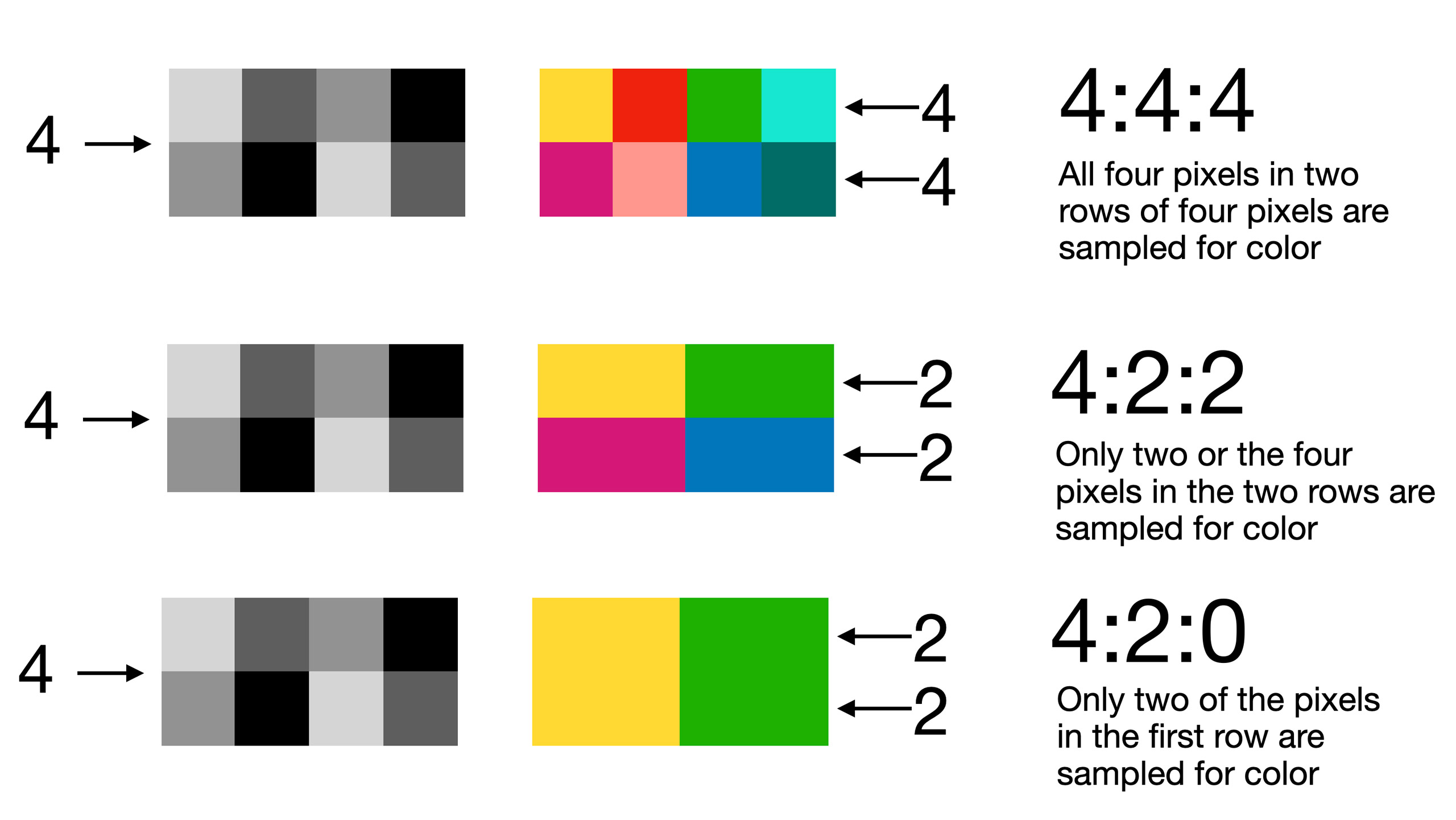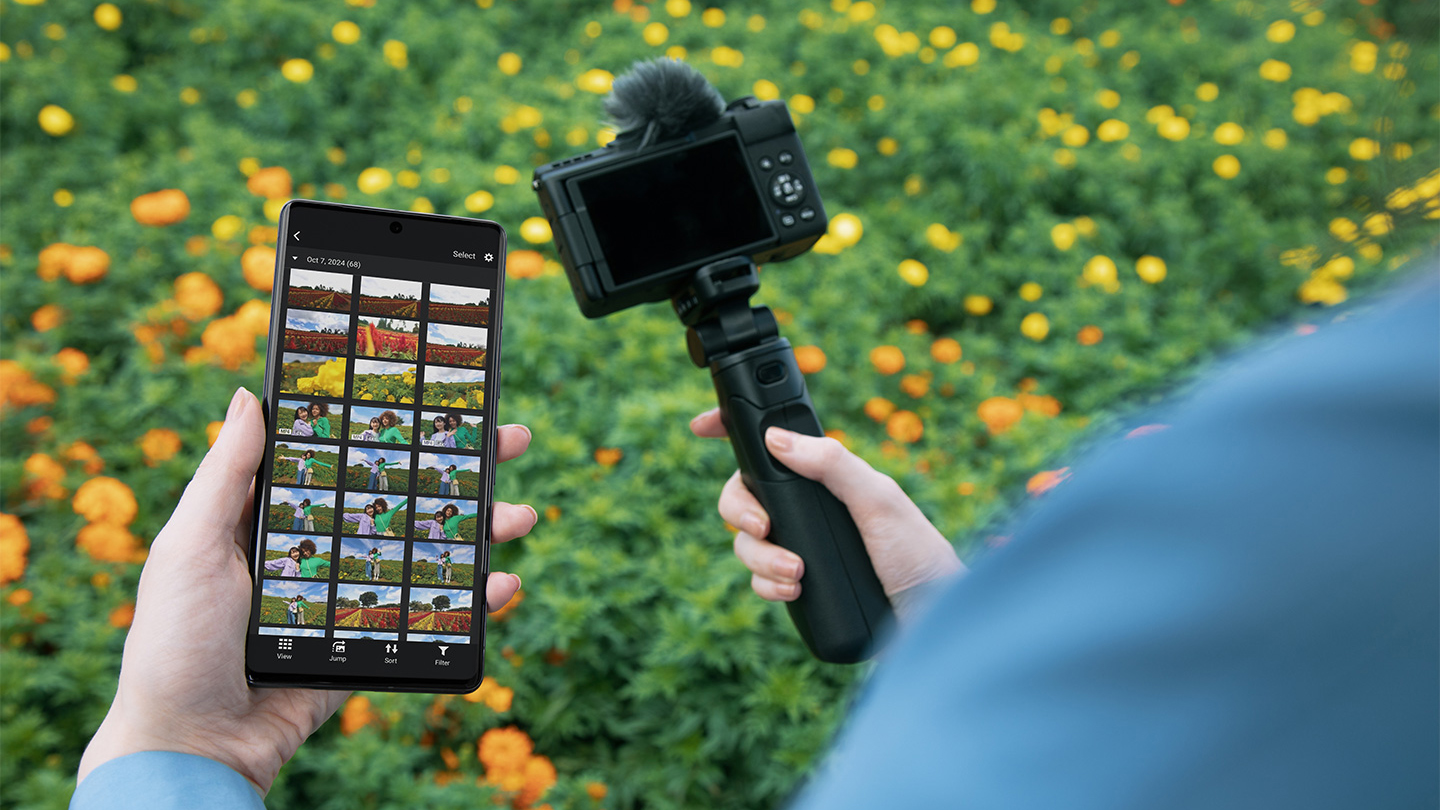4:2:2 vs 4:2:0 video: What are they and why do they matter on your camera?
You’ll see this choice a lot on hybrid cameras, but what is 4:2:2 vs 4:2:0 video and does it actually matter?

If you're using a video-focused camera, 4:2:2 vs 4:2:0 video is something you'll have to consider before too long.
There are many ways that videographers can keep files a sensible and manageable size, and this is one of them. It’s a way of compressing the color information in video to make the files smaller without seriously impacting the quality. It’s called ‘chroma subsampling’, and here’s how it works.
The first thing to know is that while cameras capture video in RGB (red, green and blue) color channels and display video on RGB monitors, the captured video format uses a different YCrBr color model.
Y is the luminance channel, Cr is a 'blue' channel, Br is a ‘red’ channel (gross simplification), and between them these three channels combine to do the same job as RGB color, just in a different way.
The point is that this YCrBr process separates out the luminance values from the color values. In video, preserving the full luminance information is important for perceived sharpness, but it’s possible to reduce the resolution of the color channels with less impact on image quality.
So do 4:2:2 and 4:2:2 relate directly to these three color channels? If only! It’s actually more complicated than that. This is video, so of course it is.
4:2:2 vs 4:2:0 video – the numbers explained
The first number does relate to the luminance channel, though. Imagine a row of four pixels, each of which has full luminance data. There’s no subsampling, so that’s four out of four pixels and confirmation the luminance data is stored in full. The first number is always a '4' for this reason.
The best camera deals, reviews, product advice, and unmissable photography news, direct to your inbox!
There’s a different explanation for the two figures following. With chroma subsampling, we have to imagine a grid of two rows of four pixels, where the color data from these pixels is merged and compressed in different ways. The first number is for the first row, the second number is for the second row.
So, let’s take 4:2:2 video.
This has no luminance compression, so the first figure is still a ‘4’, but now let’s look at the color. For the first row of four pixels, only two are read for color data. The same happens on the second row of pixels. The color data is simply copied across to the ‘missed’ pixels. So we get a ‘2’ from the first row and a '2' from the second, because color data is recorded from only 2 of the 4 pixels on both rows.
With 4:2:0 video you get full luminance information, as before, and 2 of the 4 pixels on the first row are read for color data. But the color data for the second row is skipped altogether, and this row simply inherits the color data from the first row. So that's why the third number is now a '0'.
Still with me? Don’t worry if not. The bottom line is that 4:2:0 video is a basic spec that still delivers good quality video, but 4:2:2 video is better quality and you may (but not always) notice less color bleeding and edge artifacts under magnification.
(You can also get 4:4:4 video capture with no chroma subsampling at all in professional file formats like Apple ProRes and RAW video.)
Is this something you should be worrying about? Our diagram makes it look as if almost all the color information in the image is being lost, but don't forget that color subsampling works on tiny clusters of eight pixels, and that over the whole image the color data does even out.
If you’re using and sharing unedited video straight from your camera and it’s being displayed on lower resolution devices (via social channels, say) then it’s unlikely to matter much, and basic 4:2:0 video will often be fine.
But if you want to do any proper editing and color grading later, and you expect your video to be shown on larger screens or monitors, the 4:2:2 video will be better when it comes to how fine detail is rendered.
You might also like…
Check out the best cameras for vlogging, the best cameras for filmmaking and the best 6K and 8K cameras.

Rod is an independent photography journalist and editor, and a long-standing Digital Camera World contributor, having previously worked as DCW's Group Reviews editor. Before that he has been technique editor on N-Photo, Head of Testing for the photography division and Camera Channel editor on TechRadar, as well as contributing to many other publications. He has been writing about photography technique, photo editing and digital cameras since they first appeared, and before that began his career writing about film photography. He has used and reviewed practically every interchangeable lens camera launched in the past 20 years, from entry-level DSLRs to medium format cameras, together with lenses, tripods, gimbals, light meters, camera bags and more. Rod has his own camera gear blog at fotovolo.com but also writes about photo-editing applications and techniques at lifeafterphotoshop.com
You must confirm your public display name before commenting
Please logout and then login again, you will then be prompted to enter your display name.


